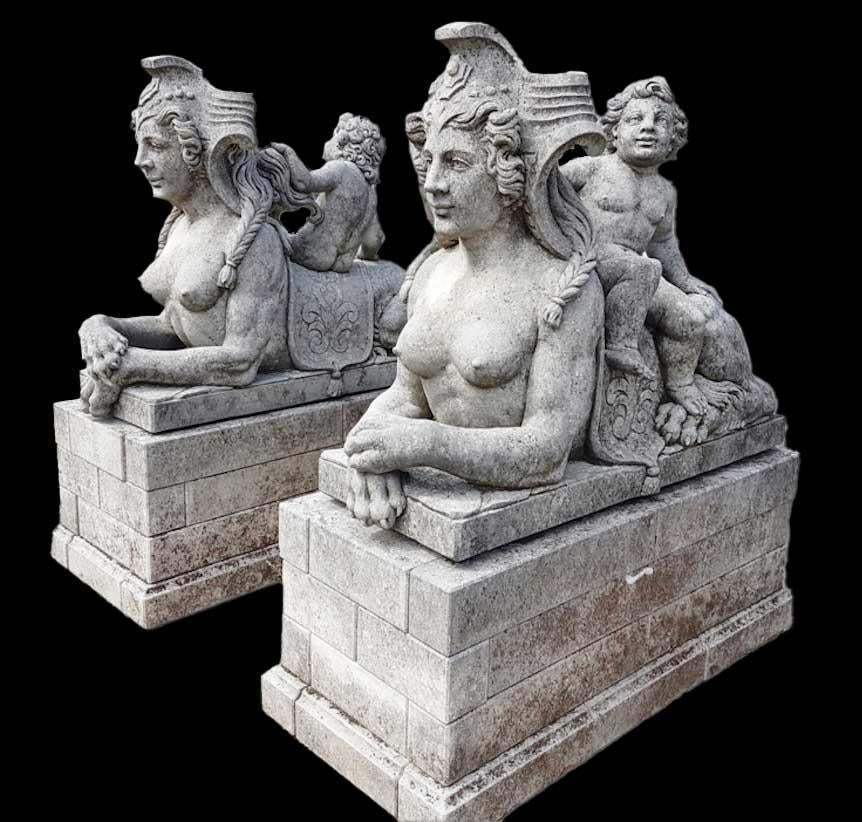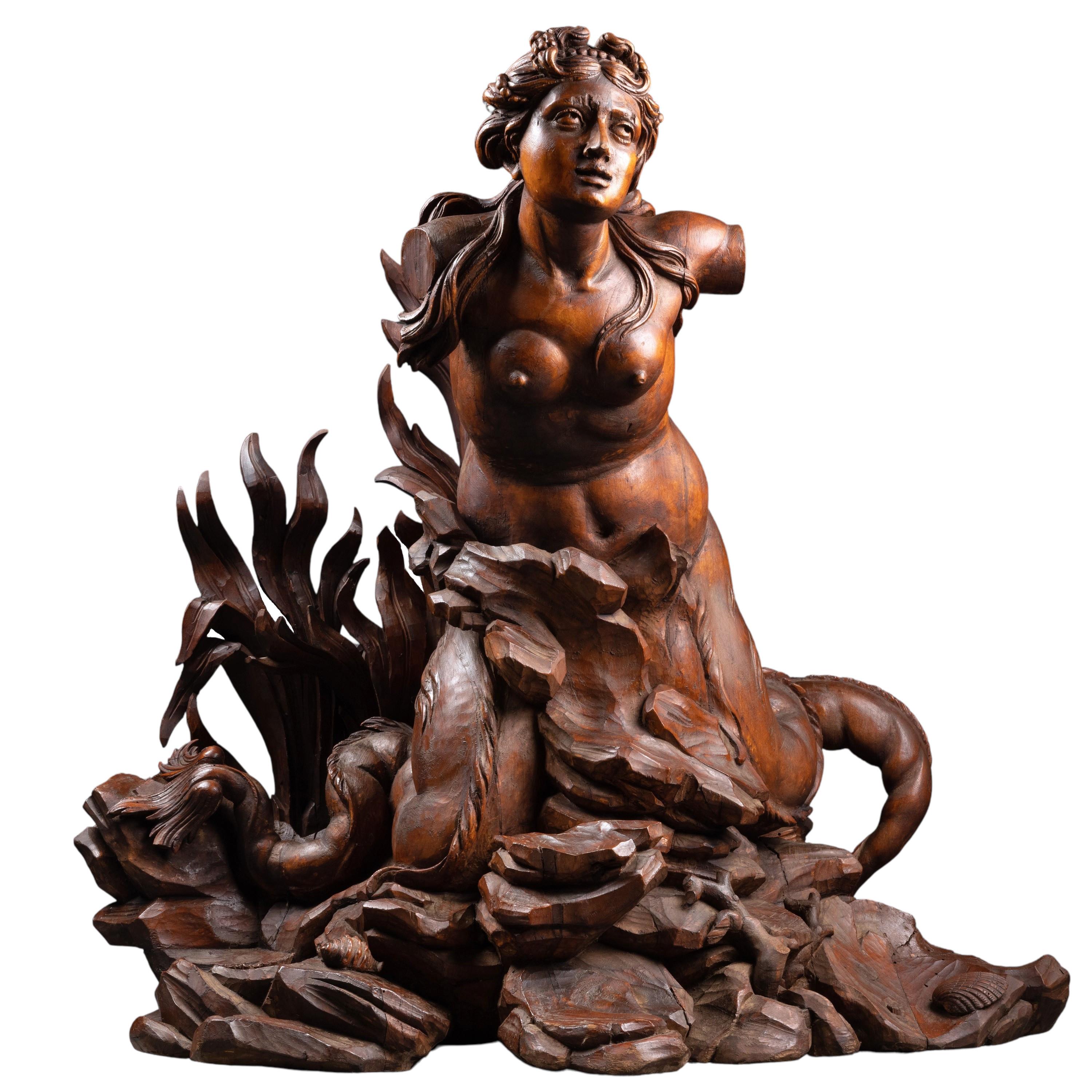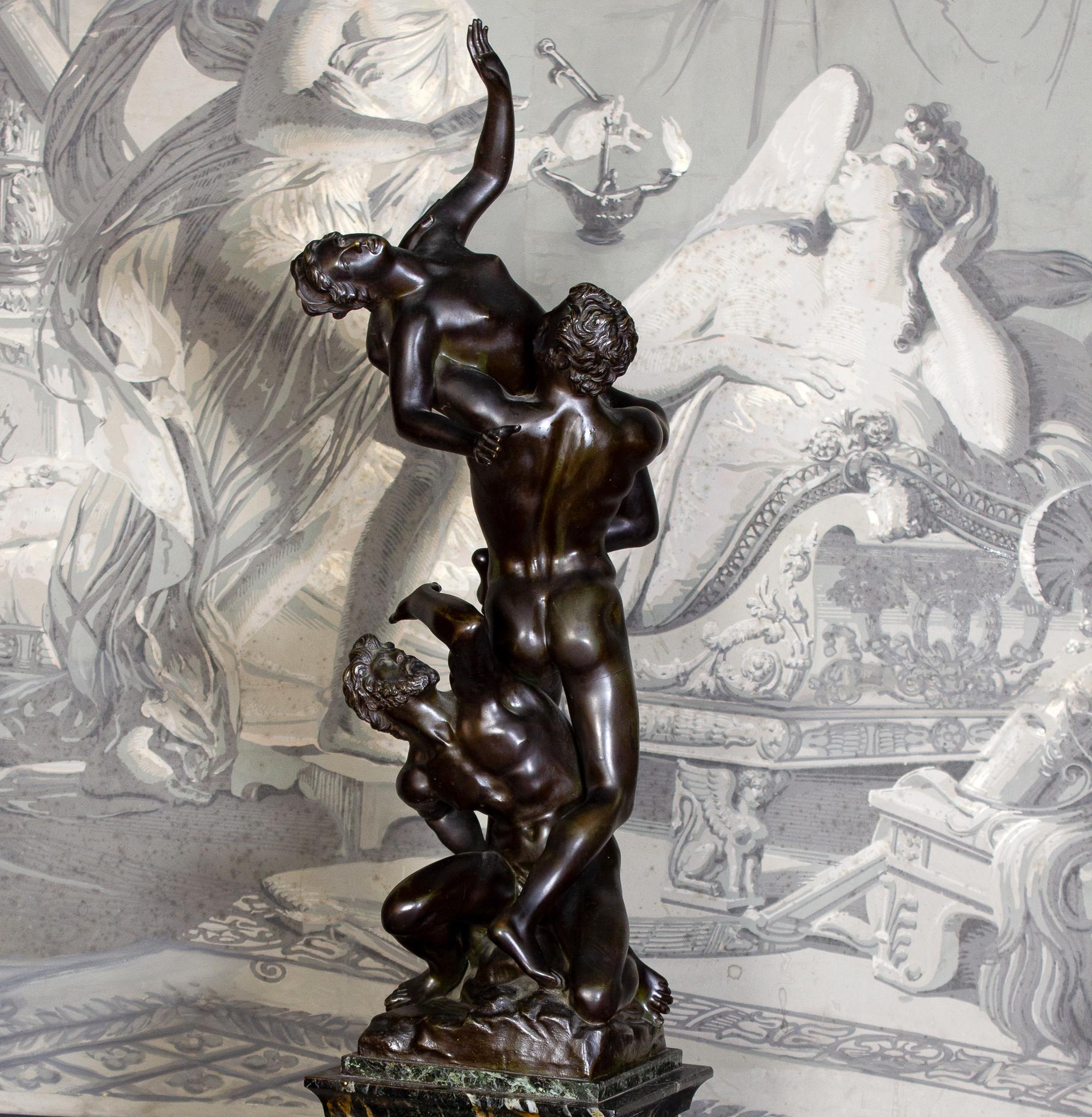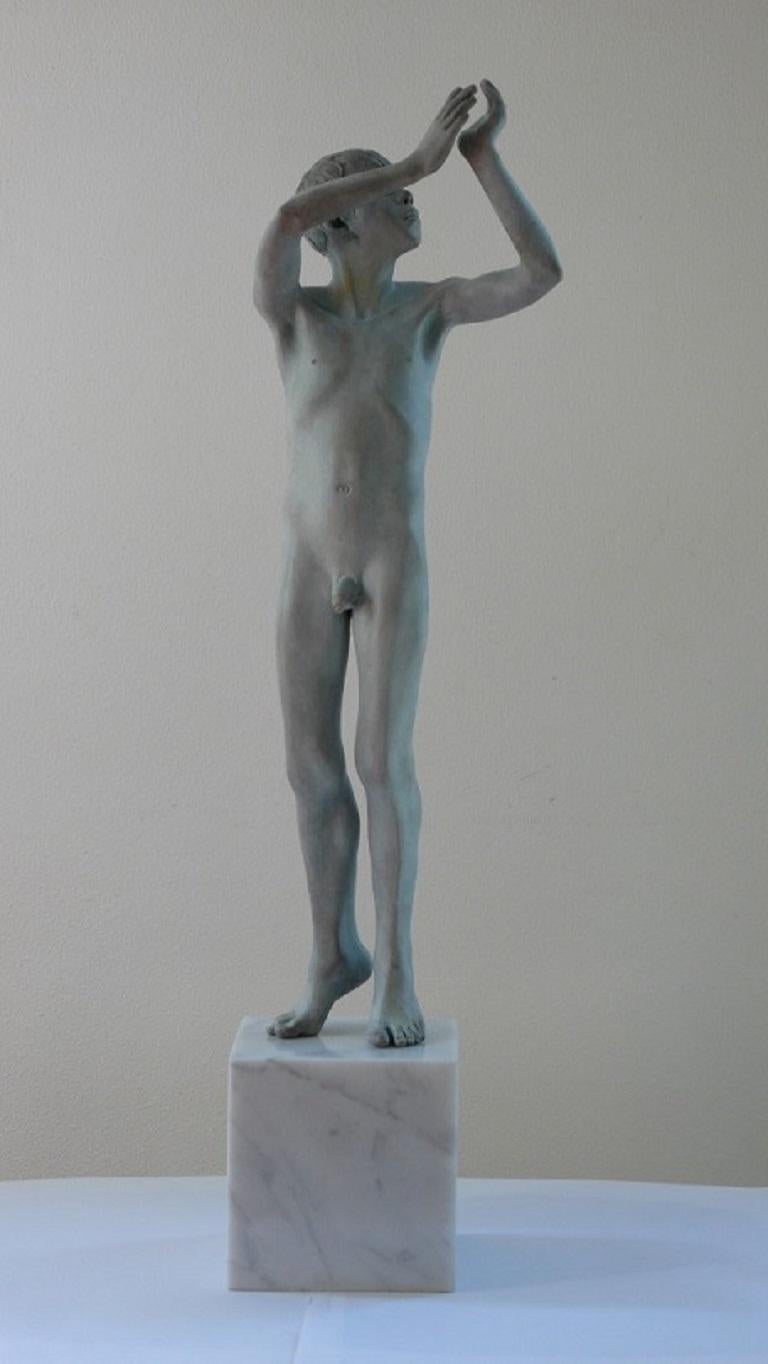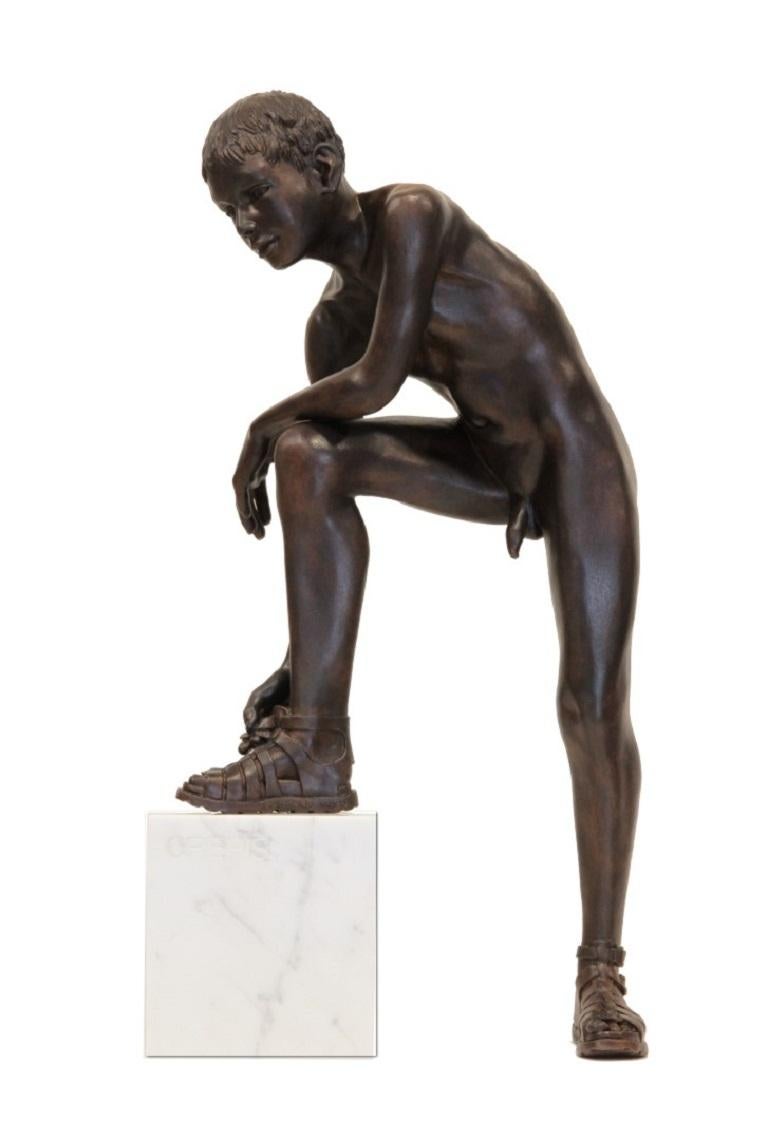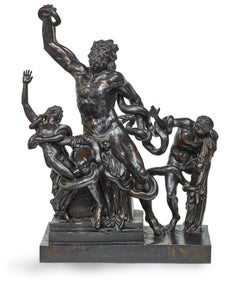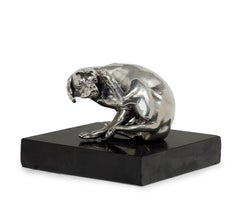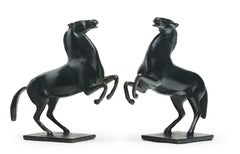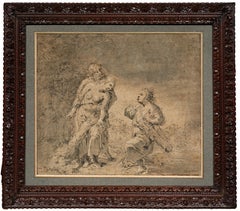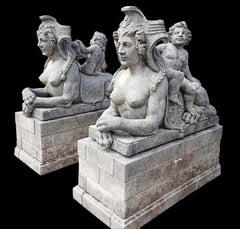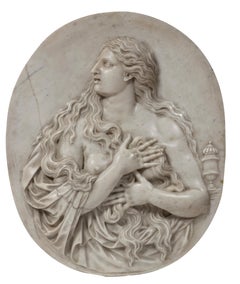
Saint Mary Magdalene, a white marble medallion, after Etienne Le Hongre
View Similar Items
Want more images or videos?
Request additional images or videos from the seller
1 of 5
Saint Mary Magdalene, a white marble medallion, after Etienne Le Hongrecirca. 1700
circa. 1700
About the Item
- Creation Year:circa. 1700
- Dimensions:Height: 16.34 in (41.5 cm)Width: 13.59 in (34.5 cm)
- Medium:
- Movement & Style:
- After:Etienne Le Hongre (1628 - 1690, French)
- Period:Early 18th Century
- Condition:The marble is cracked on the right side of the figure; this old crack (visible on the picture) runs up to the right elbow. This high-relief can be set in a 19th century black lacquered wood frame, which will be given to the buyer.
- Gallery Location:PARIS, FR
- Reference Number:1stDibs: LU156829293322
About the Seller
5.0
Vetted Professional Seller
Every seller passes strict standards for authenticity and reliability
Established in 2020
1stDibs seller since 2021
9 sales on 1stDibs
Authenticity Guarantee
In the unlikely event there’s an issue with an item’s authenticity, contact us within 1 year for a full refund. DetailsMoney-Back Guarantee
If your item is not as described, is damaged in transit, or does not arrive, contact us within 7 days for a full refund. Details24-Hour Cancellation
You have a 24-hour grace period in which to reconsider your purchase, with no questions asked.Vetted Professional Sellers
Our world-class sellers must adhere to strict standards for service and quality, maintaining the integrity of our listings.Price-Match Guarantee
If you find that a seller listed the same item for a lower price elsewhere, we’ll match it.Trusted Global Delivery
Our best-in-class carrier network provides specialized shipping options worldwide, including custom delivery.More From This Seller
View AllLaocoön and his Sons, an exceptional bronze sculpture by Giacomo Zoffoli
Located in PARIS, FR
This exceptional bronze group (unpublished), executed in Rome in the second half of the 18th century, bears witness to the fascination with the Laocoön since its discovery on January...
Category
1770s Old Masters Nude Sculptures
Materials
Bronze
Dog scratching its ear
Located in PARIS, FR
This amusing naturalistic sculpture in silver-plated pewter was probably made in the 17th century by Georg Schweigger. Inspired by a model created by another Nuremberg sculptor, Peter Flötner, it bears witness to the persistence during the baroque era of the naturalistic taste that emerged in the Renaissance. Intended as an ornament for some Kunstkammer, or cabinet of curiosities, this sculpture was a great success, as can be seen from the presence of similar works in many European museums.
1. Georg Schweigger
Georg Schweigger was a baroque sculptor and medal founder from Nuremberg, known mainly for his small-scale works in stone, carved wood and cast metal. His only large-scale work, the Neptune Fountain, has been in the Petershof Palace, the summer residence of the Tsars near St. Petersburg, since 1797. This monumental sculpture demonstrates his taste for the representation of movement, which we find in this small piece, inspired, as we shall see, by earlier models.
2. The success of a naturalistic theme
As is often the case in the history of art, the source of the Dog scratching his ear theme probably comes from an engraving, and more precisely from one made in Strasbourg in 1480 or in Aschaffenburg in 1481 by the Master of the Housebook, an anonymous engraver working in southern Germany at the end of the 15th century.
This engraving seems to have been Peter Flötner’s (1490 - 1546) source of inspiration. Peter Flötner was a sculptor and engraver who settled in Nuremberg in 1522. The Louvre Museum also has a gilded lead statuette dated between 1500 and 1515 (on deposit at the Musée de L'Œuvre in Strasbourg), which in turn is thought to have served as a model for other known statuettes.
This model was later taken up by the Frenchman Barthélemy Prieur...
Category
17th Century Naturalistic Figurative Sculptures
Materials
Marble, Silver
$5,850
Pair of Prancing Horses, two bronzes signed and numbered by Arno Breker
Located in PARIS, FR
An official artist of the Nazi regime, trained in Montparnasse in the 1930s, Arno Breker continued to sculpt after the fall of the Third Reich, producing large-scale public commissions in Germany and portraits of prominent figures. The two small bronzes presented here, dated around 1978, are part of a long tradition of prancing horses dating back to antiquity. The asymmetrical treatment of the two front legs and the inclination of the head make these two copies of the same artwork a highly decorative pair.
1. Arno Breker, a prolific sculptor, from the Bohemia of Montparnasse to the commissions from the Third Reich ... and from the Federal Republic of Germany
The son of a stone carver, Arno Breker studied fine art and anatomy in his native Elberfeld. At the age of 20, he entered the Düsseldorf Academy of Art. He moved to Paris in 1926, where he continued his training in the studio of Maillol, who dubbed him "the German Michelangelo of the twentieth century". He shared a studio with Alexandre Calder and frequented Jean Cocteau, Foujita, Brancusi, Pablo Picasso and other artists of the bohemian Paris of the time. It was also in Paris in 1933 that he met Demetra Messala, the daughter of a Greek diplomat who posed for Maillol and Picasso, whom he married in 1937. Having won the Prussian Prix de Rome in 1932, he left Paris to stay at the Villa Massimo, the German Academy in Rome.
Returning to Germany in 1934, his style evolved towards a more marked imitation of ancient sculpture. He created two monumental statues for Berlin's Olympic Stadium, before being appointed professor at the Berlin College of Fine Arts in 1937. He came to the attention of the Reich Propaganda Ministry, which awarded him several commissions and provided him with three large studios in which Breker produced many monumental sculptures to the glory of the regime. On June 23, 1940, Breker accompanied Adolf Hitler during a visit to Paris. During the Occupation, his political connections enabled him to intervene on behalf of many artists pursued by the Nazis: for example, he protected Pablo Picasso (then a Communist) from Kommandantur officers.
Most of Arno Breker's work was destroyed in Berlin at the end of the war in 1945 by bombing and intentional destruction perpetrated by soldiers of the victorious powers. After the fall of the Nazi regime, however, Arno Breker was never prosecuted. He opened a new studio in Düsseldorf, where he sculpted until his death in 1991.
He then carried out several public commissions in Germany (Bayreuth, Wuppertal), as well as portraits of numerous personalities, including King Mohammed V of Morocco, Léopold Sedar Senghor (commissioned by the Académie Française in 1978) and the two chancellors of the Federal Republic of Germany, Konrad Adenauer and Ludwig Erhard. The Arno Breker Museum in Nörvenich is now exhibiting some of his artworks.
2. Related artworks: from the Wild Horses of the Quirinal to the Horses of Marly
The prancing horse is a major iconographic theme, found in a series of sculptures from Antiquity, the Renaissance and the Classical Age. Various photos from Arno Breker's studio in Berlin confirm the predominant place of equine representations in his work (alongside male nude statues), and confirm that this reduced version created in 1978 is part of the artist's preferred repertoire.
Prancing horses are generally associated with a male figure in a group that, through a reference drawn from Antiquity, symbolizes man's domination over nature. In this respect, it is very interesting to compare our small bronzes with the horse forming part of a large sculpture by Arno Breker (made in 1936 and probably destroyed in 1945) depicting Alexander taming Bucephalus.
This statue is itself directly inspired by one of the best-known works of 18th-century French sculpture...
Category
1970s Art Deco Figurative Sculptures
Materials
Bronze
Silvio and Dorinda, a drawing by Leonaert Bramer, Vermeer's first master
Located in PARIS, FR
This finely executed drawing in pen and wash is typical of the work of Leonaert Bramer, one of the most fascinating yet little-known artists of 17th-century Holland.
In a nocturnal ...
Category
1650s Old Masters Figurative Drawings and Watercolors
Materials
Ink, Gouache, Laid Paper, Pen
Frieze of antique figures, a drawing by the sculptor Antoine-Denis Chaudet
Located in PARIS, FR
Faithful to the neo-classical taste, sculptor Antoine-Denis Chaudet presents us with a frieze of antique figures executed in gray wash over pencil strokes, which is likely inspired b...
Category
Early 1800s Old Masters Figurative Drawings and Watercolors
Materials
Paper, Pencil, Ink
A circular dish decorated by Paul Helleu with a Portrait of a Woman
Located in PARIS, FR
This dish, inspired by the bellas of the Italian Renaissance, bears witness to the fruitful collaboration that began in 1882 between the ceramist Théodore Deck and the young artist P...
Category
1880s Impressionist More Art
Materials
Earthenware, Glaze
You May Also Like
Pair of Exceptional Italian Sphinx Limestone Statues
Located in Rome, IT
Designed as entrance guardians, this pair of mythical lady sphinx statuary display the head and chest of a neoclassical woman and the body of a recumbent lion on a rectangular stone ...
Category
2010s Baroque Figurative Sculptures
Materials
Limestone
Pair of Exceptional Italian Sphinx Limestone Statues
Located in Rome, IT
Designed as entrance guardians, this pair of mythical lady sphinx statuary display the head and chest of a neoclassical woman and the body of a recumbent lion on a rectangular stone ...
Category
2010s Baroque Figurative Sculptures
Materials
Limestone
Pair of Exceptional Italian Sphinx Limestone Statues
Located in Rome, IT
Designed as entrance guardians, this pair of mythical lady sphinx statuary display the head and chest of a neoclassical woman and the body of a recumbent lion on a rectangular stone ...
Category
2010s Baroque Figurative Sculptures
Materials
Limestone
Pair of Exceptional Italian Sphinx Limestone Statues
Located in Rome, IT
Designed as entrance guardians, this pair of mythical lady sphinx statuary display the head and chest of a neoclassical woman and the body of a recu...
Category
2010s Baroque Figurative Sculptures
Materials
Limestone
The Rape of Sabine Iconic Bronze Sculpture 1930
Located in Rome, IT
Fine Group of Sculptures in Bronze after Jean de Boulogne (Giambologna)
The torturously twisting Rape of the Sabine Women is one of the finest and most technically difficult sculptures in the world. Three intertwined bodies, two men and a woman, spiral upwards as the woman tries to escape the clutches of the younger man standing over the older one. It is an absolute masterpiece by the Flemish sculptor Giambologna.
After the original in Florence’s Loggia dei Lanzi, Piazza della Signoria...
Category
1920s Mannerist Figurative Sculptures
Materials
Bronze
Putto in legno dorato reggi candela barocco italiano
Located in Florence, IT
One flame candle holder putto made of gilded wood.
Those kind of objects were present in churches or noble villas, specially during the Baroque times.
The base is not coeval.
Category
17th Century Baroque Nude Sculptures
Materials
Gold
Recently Viewed
View AllMore Ways To Browse
Antique Religious Medallions
Terracotta Saint
Reproduction Louis Xiv
King Louis Statue
Religious Garden Statues
Marble Statue Naked
Jesus And Mary Figure Sculpture
Mary Statue Italian
Religious Church Statue Of Jesus
Mary Magdalene Sculpture
Italian Medallion Mary
Marble Mary Statue
Staircase Chest
Equestrian Statue Of Louis Xiv
Staircase Chest
Equestrian Statue Of Louis Xiv
Jesus And Mary Figure Sculpture
Marble Mary Statue
